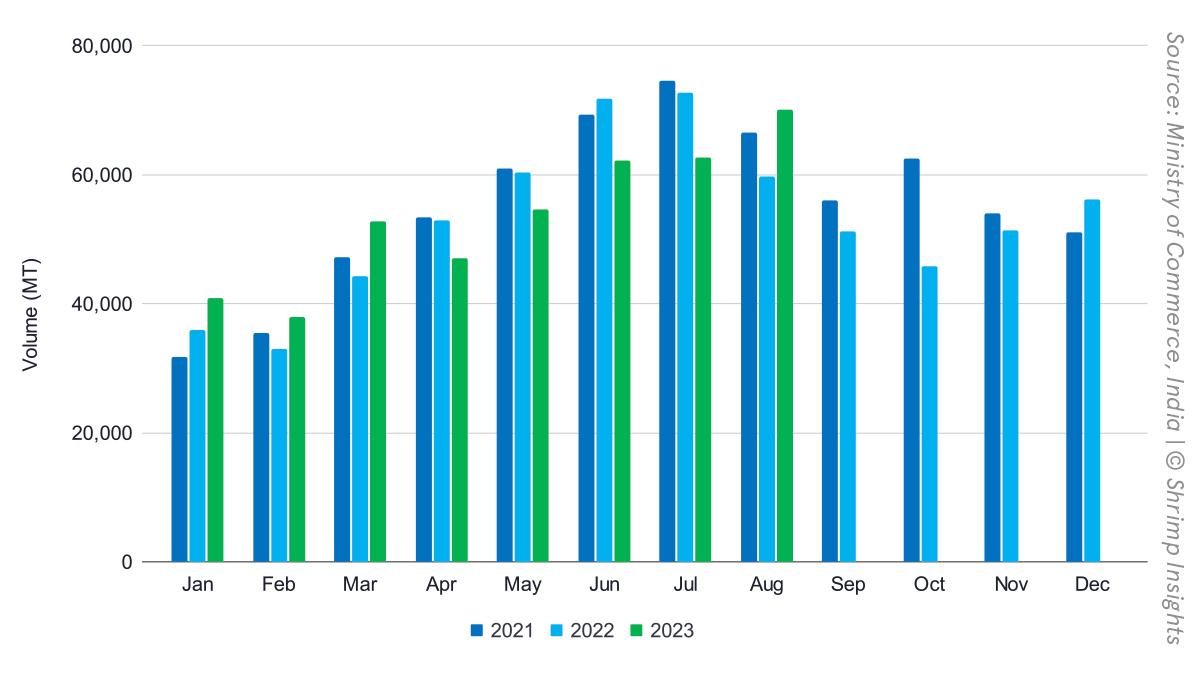
To my surprise, the substantial drop in this year’s broodstock import data is not yet reflected in India’s export numbers.
In August, India reported 17% year-on-year growth in farmed shrimp exports. The growth was driven by raw L. vannamei exports, which increased 17% year-on-year, and raw P. monodon exports, which increased 35% year-on-year. But for the first time this year, exports of value-added shrimp increased year-on-year by 10%.
Unfortunately, the surge in volume comes at the cost of a further drop in average value per kilogram for raw L. vannamei to $6.29. A drop from $6.55 in July 2023 and a drop from $7.54 in September 2022. The average price is now around the same level as during the price crash during Covid-19 in April 2020. However, we need to keep inflation and exchange rates in mind when comparing these prices in US dollar terms.
With August exports reported, India’s year-total exports from January to August stand at 428,384MT, the same volume as in 2022. Year-total raw L. vannamei exports now amount to 372,122 MT, flat compared to 2022. Year-total raw P. monodon exports now amount to 17,447 MT, up 101%. Year-total value-added exports now amount to 38,816 MT, down 20% year-year.
The surge in raw L. vannamei exports in August was primarily absorbed by the US (27% year-on-year increase), China (18% year-on-year increase), and other Asian markets (15% year-on-year increase). Exports to the EU dropped by 7%. In year-total terms, raw L. vannamei exports to the US are now up by 5%, to China down by 11%, to other Asian markets down by 2%, and to the EU down by 5%. Exports to other European markets (primarily Russia) are up by 50% year-on-year.
In terms of year-total P. monodon export markets, China, with almost 5,000 MT, now absorbed 25% (up from almost 400 MT in 2022), and other Asian markets (mainly Japan and Malaysia) with 6,872 MT now account for 40% (up by 66% year-on-year). Also, exports to the EU now amount to 18% but were up only 19% year-on-year. Also, the US continues to grow its appetite for Indian P. monodon as it imports 2,227 MT, a 70% year-on-year increase.
